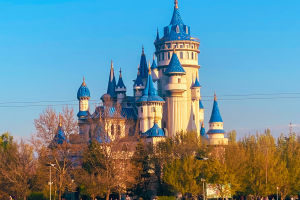Have you ever gazed up at Big Ben, London’s most famous clock tower, and felt its timeless presence?
Big Ben is not just a clock; it’s a symbol of Britain’s rich history and the heart of London’s skyline.
The Tale Behind Big Ben: More Than Just a Clock
Though we all know it as Big Ben, the name actually refers to the Great Bell housed within the tower. This iconic bell tolls across the city every hour, marking time for Londoners since 1859. The clock tower itself is officially named the Elizabeth Tower, a tribute to Queen Elizabeth II in her Diamond Jubilee year.
Big Ben has endured fires, history, and weather, yet it stands strong as a reminder of Britain’s resilience. When it chimes, it’s not just a sound; it’s a legacy, heard across London and even broadcast worldwide during special events.
Architectural Splendor: Why Big Ben Captivates the Eye
The tower’s design is a masterpiece of Victorian Gothic architecture, a style that blends intricate stonework with a sense of grandeur. Standing at 96 meters, Big Ben’s clock faces are 7 meters in diameter, with each minute hand stretching over 4 meters. These details make Big Ben not only a clock but also a work of art.
When the sun sets, the tower lights up, casting a warm glow over Westminster. Watching it illuminated at night is a magical experience, and it’s no wonder this landmark is one of the most photographed sights in London.
The Clock That Never Stops (Almost!)
Big Ben is known for its incredible precision. Despite London’s damp and sometimes freezing climate, this clock has been famously accurate for over a century and a half. There’s even a stack of old pennies placed on the pendulum to keep it running on time—a British tradition that highlights its quirky maintenance.
While it rarely stops, the clock has paused a few times for renovations, the most recent spanning from 2017 to 2021. This restoration gave Londoners a rare quiet moment and made the first chime in four years all the more memorable when it returned.
Why Big Ben Matters: A Symbol Beyond London
Big Ben has come to symbolize unity, strength, and heritage for the UK. It tolls on major national events, from New Year’s celebrations to Remembrance Day, and stands as a silent witness to history, from political protests to royal parades.
When Big Ben was bombed during the Blitz of history, its survival became a beacon of hope for the British people. The clock continued to chime through the time, symbolizing the country’s perseverance.
How to Experience Big Ben: Tips for Visitors
While visitors can’t enter the clock tower itself, the nearby attractions provide a full experience of London’s historic center. Take a stroll along the River Thames for the best view of Big Ben and capture it with the Houses of Parliament in the background.
If you’re interested in British history, the neighboring Westminster Abbey and the Houses of Parliament offer deep dives into Britain’s past. And if you’re lucky enough to be in London on the hour, pause and listen to the chimes—they’re an unmistakable part of the city’s rhythm.
Capture Big Ben: Photography Tips
Whether you’re a seasoned photographer or just snapping on your phone, Big Ben is a stunning subject. Early morning light captures the details beautifully, while sunset provides dramatic backdrops. Try different angles from Westminster Bridge and the banks of the Thames for unique shots.
For those who love close-ups, focus on the clock face itself. The Roman numerals and ornate hands make a fascinating picture, especially when zoomed in to showcase the details.
A Legacy That Ticks On
For locals, Big Ben is a familiar friend; for visitors, it’s a must-see landmark that brings London’s history to life. It may seem like just a clock, but it’s a living part of British culture, a symbol of endurance, and a connection to generations past.
So, whether you’re strolling by or watching from afar, remember that every tick and chime of Big Ben tells a story—one of tradition, resilience, and timeless charm. Next time you hear it toll, take a moment to appreciate its place in the world, and in the heart of London.


